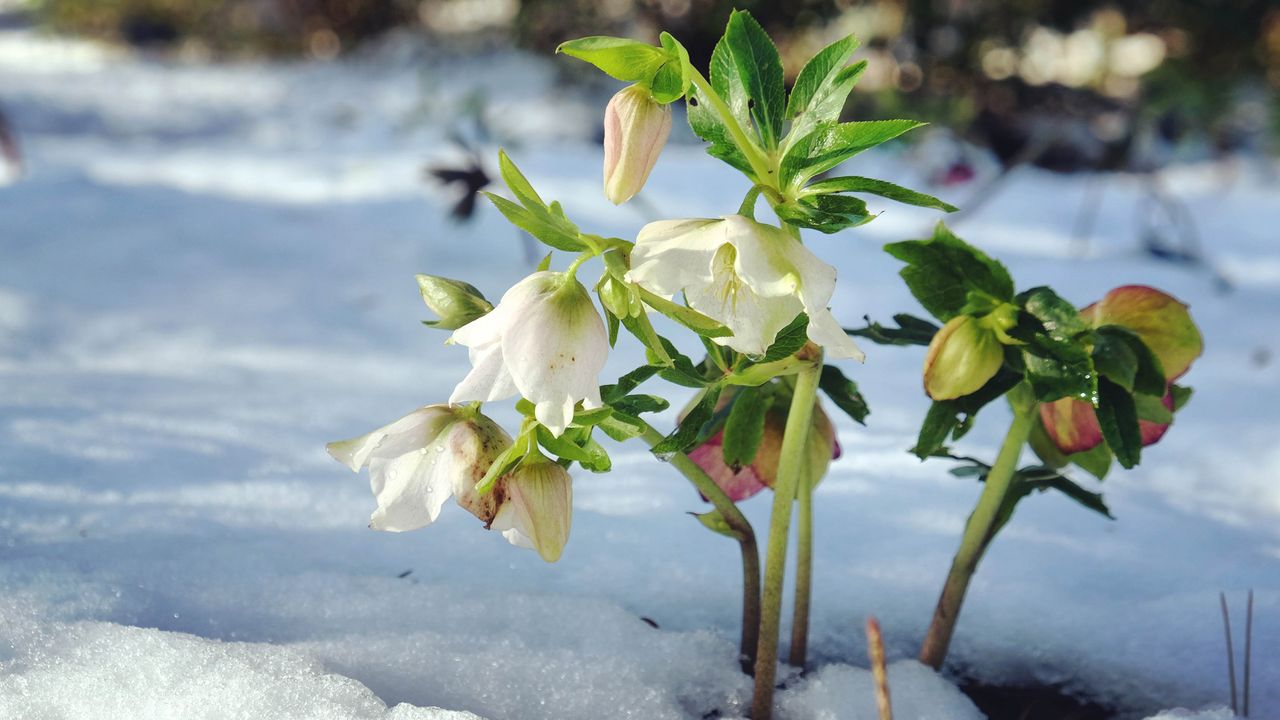Lifestyle
Protect Your Outdoor Plants: Expert Tips for Winter Care

As winter approaches, outdoor plants face significant threats from frost, heavy rain, and icy conditions. To ensure your garden remains healthy and vibrant next spring, experts recommend taking proactive measures to protect your plants. Implementing the right strategies now can help prevent damage and foster growth for the upcoming season. Here are three essential tips from gardening specialists to safeguard your outdoor plants during the harsh winter months.
1. Apply a Protective Layer of Mulch
One of the most effective strategies for protecting plants is to apply a layer of mulch around them. This organic material, such as wood chips or leaves, serves multiple purposes. It helps retain soil moisture, insulates plant roots from frost, and adds essential nutrients to the soil.
There are two primary types of mulch: organic and synthetic. Organic mulch consists of materials like straw, bark, or grass, while synthetic mulch includes man-made substances such as rubber or plastic. Each type has distinct benefits, but organic mulch is often preferred for its natural qualities.
Experts emphasize the importance of using the right amount of mulch. Jane Fairlie, a gardening expert and development manager at Pelsis Doff, suggests ensuring that mulch is replenished as needed to maintain its effectiveness throughout the winter.
2. Shield Vulnerable Plants from Frost
Cold temperatures can severely damage sensitive plants, making it crucial to provide adequate protection. Wrapping delicate plants with horticultural fleece or other insulating materials can help shield them from the frigid air. “October is the month to start preparing your garden for frost,” Fairlie advises.
For outdoor plants that must remain outside, covering them with garden fleece or cloches during colder nights is vital. Additionally, mulching around the base of shrubs and perennials can further protect roots while helping to retain soil moisture.
For potted plants, experts recommend moving them into a greenhouse or a sheltered area against the house. This will help them benefit from retained heat. Before bringing containers indoors, check for pests and diseases that could affect other plants. Jamie Shipley, managing director of Hedges Direct, suggests soaking pots in lukewarm water for about 15 minutes to eliminate any potential pests.
3. Reinforce Root Stability to Prevent ‘Wind Rock’
Newly planted trees and shrubs require special attention during winter, particularly from strong winds that can cause a condition known as “wind rock.” This occurs when gusts disturb the top growth of plants, loosening their roots and creating air pockets in the soil. This can lead to cold damage and hinder their establishment.
To counteract this, Shipley recommends using support canes to secure young trees and shrubs. Regularly re-firming the soil around their roots is essential to prevent them from loosening. Adding compost to fill gaps in the soil can also help reinforce their stability.
Additionally, watering the soil before frost arrives can be beneficial. Shipley explains, “Wet soil holds more heat than dry soil, making it a vital consideration as frost approaches.”
By following these expert-approved tips, gardeners can help ensure their outdoor plants endure the winter months. Taking time now to prepare can lead to a flourishing garden when spring arrives.
-

 Science2 months ago
Science2 months agoUniversity of Hawaiʻi Joins $25.6M AI Project to Monitor Disasters
-

 Business2 months ago
Business2 months agoForeign Inflows into Japan Stocks Surge to ¥1.34 Trillion
-

 Top Stories2 months ago
Top Stories2 months agoBOYNEXTDOOR’s Jaehyun Faces Backlash Amid BTS-TWICE Controversy
-

 World2 months ago
World2 months agoBoeing’s Merger with McDonnell Douglas: A Strategic Move Explained
-

 Top Stories2 months ago
Top Stories2 months agoCarson Wentz Out for Season After Shoulder Surgery: Urgent Update
-

 Entertainment2 months ago
Entertainment2 months agoSydney Sweeney Embraces Body Positivity Amid Hollywood Challenges
-

 Top Stories2 months ago
Top Stories2 months agoMarc Buoniconti’s Legacy: 40 Years Later, Lives Transformed
-

 Lifestyle2 months ago
Lifestyle2 months agoKelsea Ballerini Launches ‘Burn the Baggage’ Candle with Ranger Station
-

 Health2 months ago
Health2 months agoInnovative Surgery Restores Confidence for Breast Cancer Patients
-

 Sports2 months ago
Sports2 months agoSteve Kerr Supports Jonathan Kuminga After Ejection in Preseason Game
-

 Entertainment2 months ago
Entertainment2 months agoZoe Saldana Advocates for James Cameron’s Avatar Documentary
-

 Lifestyle2 months ago
Lifestyle2 months agoDua Lipa Celebrates Passing GCSE Spanish During World Tour









